- Author Matthew Elmers [email protected].
- Public 2023-12-16 21:49.
- Last modified 2025-01-24 09:17.
Chinese unmanned aircraft. Currently, Chinese developers and industry are able to create and serially build all types of UAVs. Due to the presence of its own modern radio-electronic base, timely issuance of technical specifications to designers and generous funding, the People's Liberation Army of China has a multiple advantage over the armed forces of the Russian Federation in terms of the number of drones available in the troops. In addition to numerous drones of light and middle class, the PLA Air Force and Navy are armed with heavy unmanned vehicles capable of solving both tactical and strategic tasks. Compared to drones equipped with piston and turboprop engines, jet UAVs have a higher take-off weight, better thrust-to-weight ratio, and are capable of carrying an increased payload. In terms of range and flight altitude, they in most cases surpass manned aircraft of the same mass. In this regard, heavy drones have significant potential as long-range high-altitude reconnaissance vehicles, they are used for patrol flights and relaying radio signals. Some Chinese jet drones are also equipped with airborne guided weapons. Armed UAVs with transonic and supersonic flight speeds are currently being tested in China. In the future, they will be able to carry corrected bombs, anti-radar and anti-ship missiles.
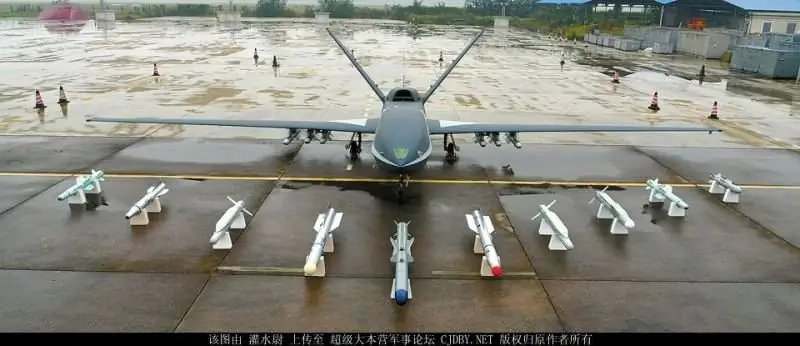
Since the volume of this publication does not allow us to familiarize ourselves with all Chinese UAVs with a jet engine, we will consider only the vehicles put into service or in trial operation, as well as the most interesting non-serial samples that are in the process of development or testing, which, according to foreign experts, have the greatest potential.
Air target TL-8 Sky Dragon
The range of applications for jet drones in China is not limited to reconnaissance and patrolling. Due to the fact that the PLA command considers the Tomahawk cruise missiles to be one of the main threats, the AVIC corporation has created an unmanned target TL-8 Sky Dragon for training air defense crews and interceptor fighters. The main criterion in the development of this device was the minimum cost with the appearance and characteristics as close as possible to the American cruise missile.

In appearance, the TL-8 Sky Dragon UAV is very similar to the KR Tomahawk BGM-109, but has smaller dimensions. The fuselage length of this unmanned vehicle is 3.77 m, the wingspan is 1.76 m. The fuselage diameter is 0.35 m. The maximum take-off weight is 250 kg. The power plant of the drone consists of one jet engine, which is capable of accelerating an air target up to a speed of 920 km / h. The duration of being in the air at maximum flight speed is 45 minutes.
The unmanned aerial vehicle is controlled from a ground station or from an air point based on the Shaanxi Y-8 turboprop aircraft (the Chinese analogue of the An-12). In terms of maneuverability, the air target is significantly superior to the Tomahawk cruise missile, and can perform maneuvers with an overload of 6G. The re-use of the "Heavenly Dragon" is envisaged, for this there is a parachute rescue system on the device. Although the TL-8 Sky Dragon UAV was designed as an aerial target, according to information published in Chinese sources, after installing special equipment modules, it can be used for electronic reconnaissance, as a jammer and a decoy target. For precise determination of coordinates, there is a satellite navigation system receiver on board. Currently, the TL-8 Sky Dragon UAV has been put into service and is being serially built.
UAV Cloud Shadow
At the Zhuhai Air Show in November 2016, the Chinese company Aviation Industry Corporation of China (AVIC) unveiled the Cloud Shadow UAV powered by the WP-11 small turbojet engine. This turbojet engine is based on the American Continental J69-T-29A, the design of which, in turn, is based on the French Marboré VI aircraft engine. Apparently, Chinese experts were able to get acquainted with American compact turbojet engines after studying the Ryan BQM-34 Firebee UAV during the war in Southeast Asia. Although, in comparison with the prototype, the thrust of the Chinese engine was increased from 7.6 kN to 10.1 kN, the WP-11 turbojet engine by modern standards has a low efficiency, which limits the time the drone spends in the air.
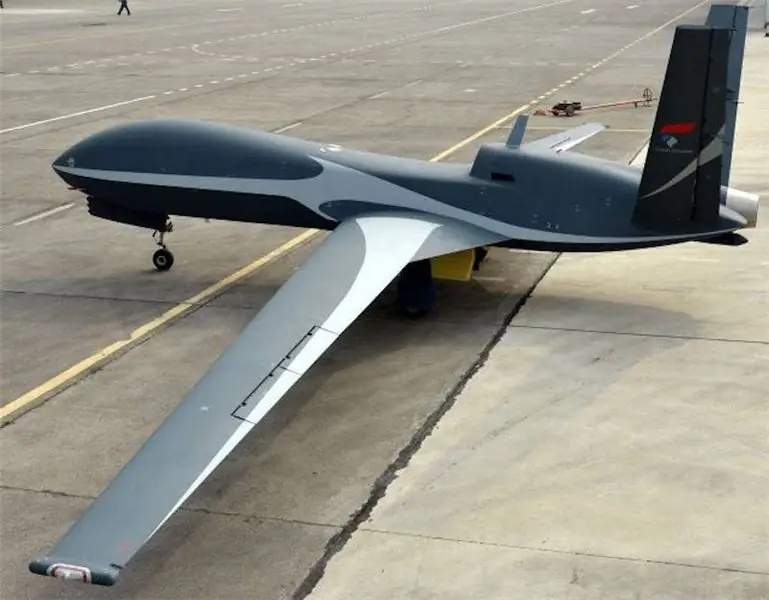
According to information presented at international arms exhibitions, the takeoff weight of the Cloud Shadow UAV is 3000 kg. Wingspan - 17, 8 m, length - 9 m. Maximum patrol altitude - 17,000 m. Flight duration - 6 hours. When performing reconnaissance and observation missions, the drone is capable of developing a maximum speed of up to 620 km / h, in the shock version with external weapon suspensions - 550 km / h. Patrol speed - 220 km / h. Payload weight - up to 450 kg.

The drone has six underwing armament units, bombs weighing up to 100 kg and light anti-ship missiles can be suspended on the near pylons to the fuselage. Under the fuselage there is a node for placing a container of a radar with a synthetic aperture or a passive radio engineering system operating in the range of 0.5-16 GHz and detecting the coordinates of enemy radars. There is also a version of pendant equipment for jamming radio stations at frequencies from 100 to 300 MHz.
When working with ground stations by radio, the range of the Cloud Shadow UAV is 290 km. One ground station can simultaneously control three unmanned vehicles. It also provides an autonomous flight mode using the Chinese satellite navigation system "Beidou" and equipment for transmitting data via satellite communication channels.

AVIC representatives also argued that the UAVs of the Cloud Shadow family use elements of low radar signature, and to reduce unmasking signs, the drone is able to fly for a long time without the use of on-board radio systems, which excludes the detection of high-frequency radiation by means of passive direction finding. UAV Cloud Shadow has a collapsible modular design, consisting of six parts. This allows, if necessary, to quickly replace a faulty unit and quickly prepare the necessary configuration for a specific task.
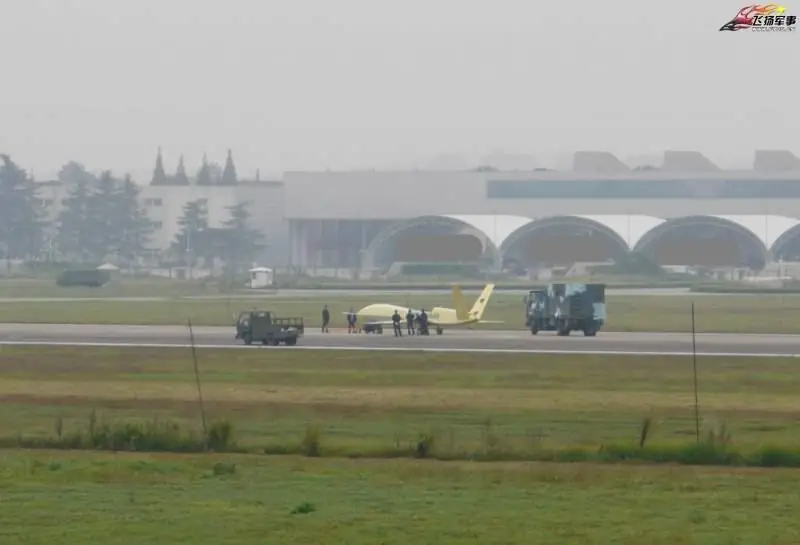
Tests of the Cloud Shadow UAV, along with other unmanned vehicles, took place at the Yinchuan Air Base, in the Ningxia Hui Autonomous Region. This airbase is known for the fact that underground shelters that can accommodate several hundred fighters have been cut in the mountains adjacent to it, there is also a test center for Chinese UAVs and an unmanned test-training squadron is based here. Apparently, the "Cloud Shadow", which is now in trial operation, will be further improved.
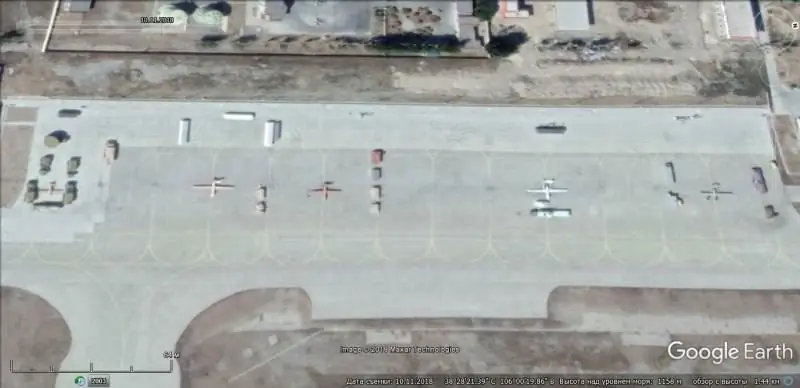
In general, the Cloud Shadow UAV has good potential, but for a drone of this class, a flight duration of 6 hours is absolutely unacceptable, which can be corrected by adapting a modern by-pass turbojet engine. Another area of improving combat performance is the use of satellite control channels, which will greatly increase the combat radius. According to expert estimates, the "Cloud Shadow" is primarily intended to neutralize enemy air defense systems of the middle and near zone with anti-radar missiles, as well as to strike at sea targets.
Unmanned strike ekranoplan CH-T1
Given that China is actively building a modern navy capable of challenging US domination in the Pacific Ocean, and whose official purpose is to protect the 21st Century Maritime Silk Road, China is creating combat drones to support the PLA's naval operations. In May 2017, images of the CH-T1 UAV, created by the CASC corporation, appeared on the network. Chinese representatives did not give official comments on the purpose of this unmanned vehicle, but unauthorized sources reported that it is an ekranoplane strike drone capable of flying at ultra-low altitudes, which, in combination with the use of low radar signature technology, should make it difficult to detect.
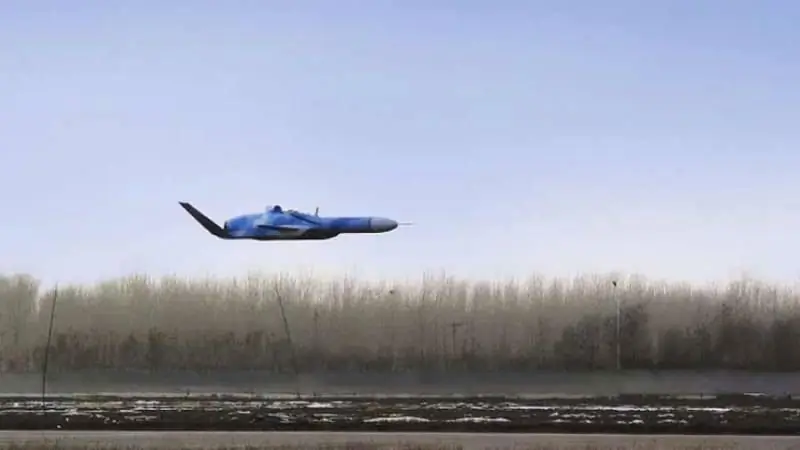
UAV CH-T1 with a takeoff weight of about 3000 kg is capable of speeds up to 850 km / h. The length of the apparatus is about 6 m. The flight range is up to 1000 km. Under the radio-transparent nose cone, there is a multifunctional radar, designed to detect surface targets. A number of experts believe that an unmanned ekranoplan can be equipped with anti-ship missiles, an alternative opinion is that this is a "kamikaze drone".
Heavy reconnaissance UAV HQ-4 Xianglong
Despite the fact that attack drones have a certain anti-ship potential, the bulk of Chinese heavy UAVs are designed for patrolling, reconnaissance and issuing target designations to anti-ship missile systems. As part of these tasks, at least two long-range unmanned aerial vehicles have been created and adopted in the PRC.
In November 2009, the HQ-4 Xianglong (Soaring Dragon) heavy jet drone, developed by the Chengdu Aircraft Industry Corporation (CAIC), took off in the air. Prior to that, in 2006, the model and drawings of this UAV were presented at the air show in Zhuhai.
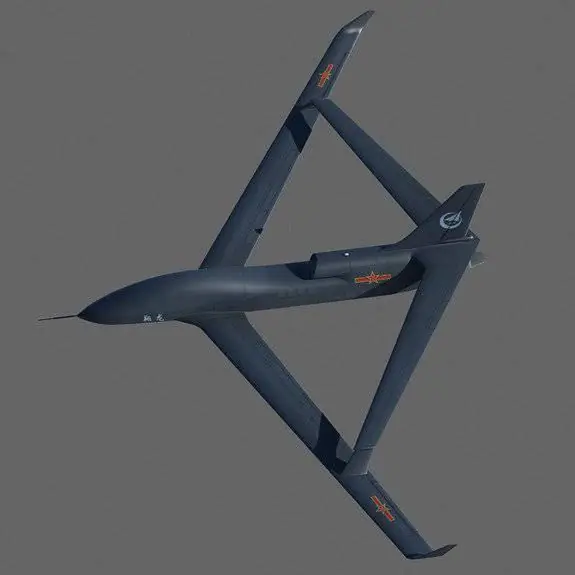
"Soaring Dragon" is built according to a rather unusual aerodynamic configuration with a "closed wing", which is a combination of a conventional and reverse swept wing. The HQ-4 Xianglong UAV has a long lower wing rooted in the bow and a forward swept upper wing with a root in the tail and flaps curved downward. The upper wing is docked with the middle of the lower wing consoles. Such a wing has the lowest inductive resistance, since end vortex flows are practically not formed. A closed wing has a high lift, and vehicles with such a wing are capable of flying at transonic speeds without using flaps.
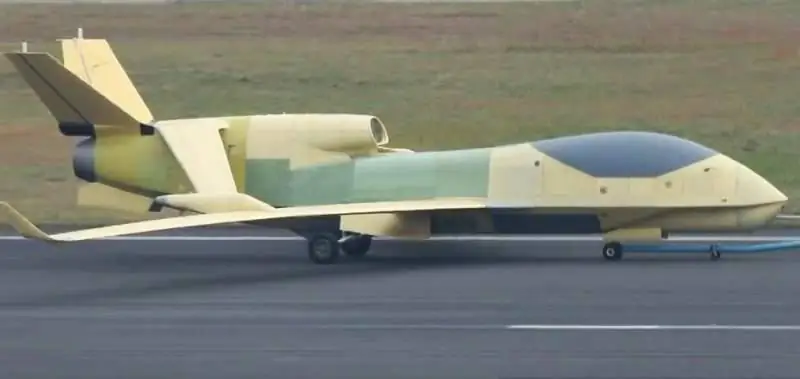
The first prototype was originally equipped with a WP-7 turbojet engine (a copy of the Soviet R-11F-300). Serial vehicles were equipped with WS-11 turbofan engines, which were also used on the light Chinese-Pakistani fighter JF-17 Thunder. In the future, "Soaring Dragon" should receive a new lightweight and economical by-pass turbojet engine, optimized for high-altitude flights.
A UAV with a takeoff weight of 7500 kg has a wingspan of 25 m and a length of 14.3 m. The maximum flight altitude is over 18000 m. The speed at high altitude is 750 km / h. The payload weighing 650 kg can include: optoelectronic reconnaissance and surveillance systems, radar, electronic reconnaissance equipment. The flight takes place in automatic mode using the Chinese satellite navigation system "Beidou". The drone's actions are controlled and the received intelligence information is transmitted via satellite communication channels or via a high-frequency broadband channel. In the latter case, other unmanned aerial vehicles can be used to relay the radio signal.

Although foreign sources often compare the HQ-4 Xianglong UAV with the American RQ-4 Global Hawk and its marine modification MQ-4C Triton, the Chinese drone has a range of up to 3500 km, while the Global Hawk is capable of operating at a distance of up to 4400 km, and the "Triton" used by the US Navy - up to 7500 km. At the same time, long-range American unmanned reconnaissance aircraft have approximately twice the take-off weight and are equipped with a wider range of reconnaissance equipment.
Nevertheless, the HQ-4 Xianglong UAVs are quite an effective means of monitoring the sea surface; it can also be used as a high-altitude photographic reconnaissance aircraft when flying over land. In June 2018, it became known that the Soaring Dragon was officially adopted. According to Chinese sources, 11 air bases have been prepared for the operation of long-range drones, mainly on the east coast of the PRC. The Flying Dragons stationed at Shigatz AFB were used during the August 2017 Doklam crisis. Chinese closed-wing drones have also been spotted at Lingshui Air Force Base located on Hainan Island and Woody Island in the South China Sea. At the end of June 2019, Taiwanese media reported that the HQ-4 Xianglong UAV was being used to track the USS Antietam Ticonderoga-class missile cruiser passing through the Taiwan Strait.
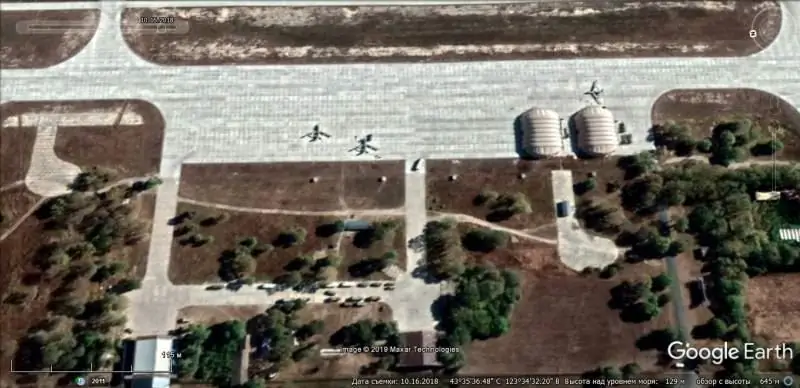
Satellite image of Google Earth: UAV HQ-4 Xianglong at Ishuntun airbase
More than two dozen Soaring Dragons can already be counted on satellite images of Chinese air bases, and their number will increase. Russian and foreign military experts agree that the main purpose of the HQ-4 Xianglong UAV is to control the ocean surface in peacetime, and in the event of an armed conflict, the timely detection and determination of the coordinates of enemy ships for striking them with anti-ship missiles.
Heavy reconnaissance UAV Divine Eagle
The heavy jet Divine Eagle was supposed to be the Chinese drone capable of surpassing the American "Global Hawk" and "Triton". Pictures of this unmanned vehicle appeared on the network in 2015, after the start of tests in Shenyang.
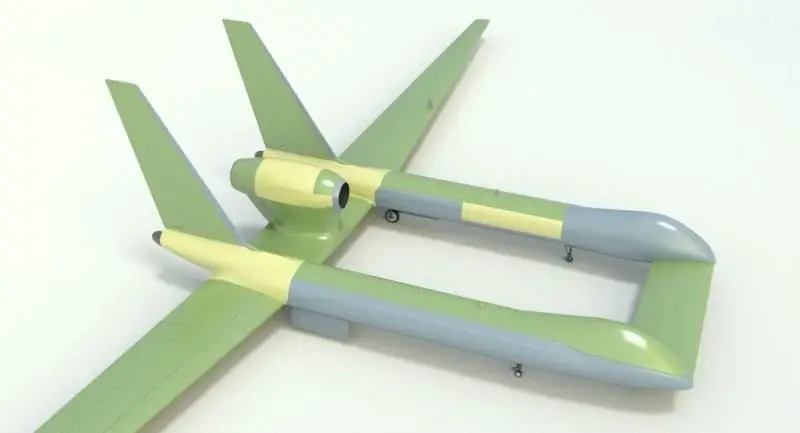
The heavy UAV Divine Eagle has a tandem hull with one turbojet engine in the middle and two keels. According to expert estimates, the "Divine Eagle" is equipped with a turbofan engine with a thrust of 3.5 to 5 tons, which is enough to lift a drone with a takeoff weight of 12-18 tons. There is no reliable information about the exact dimensions and flight data of a heavy two-keel UAV. But, judging by the satellite images obtained at the factory airfield of the Shenyang Aircraft Corporation (SYAC), the length of its fuselage can be from 15 to 18 m, and the wingspan is estimated at 40-45 m.

Given the size and layout of the Divine Eagle UAV, it can be assumed that its practical flight range will be no less than that of American heavy reconnaissance drones. The working height of the patrol can exceed 20 km, and the cruising speed is in the range of 750-800 km / h. The Chinese media write that 7 AFAR antennas are placed on the outer surfaces of the "Divine Eagle". The transmission of radar information should take place in real time via radio relay and satellite communication channels. It is generally accepted that the main purpose of the largest Chinese unmanned vehicle is to track US aircraft carrier strike groups.
A number of unauthorized sources claim that the Divine Eagle UAV entered service with the PLA in 2018. It is difficult to say how much this corresponds to reality, perhaps it is only undergoing military tests. The Soaring Dragon and Divine Eagle heavy drones have been spotted at Anshun Air Force Base in Guizhou Province.
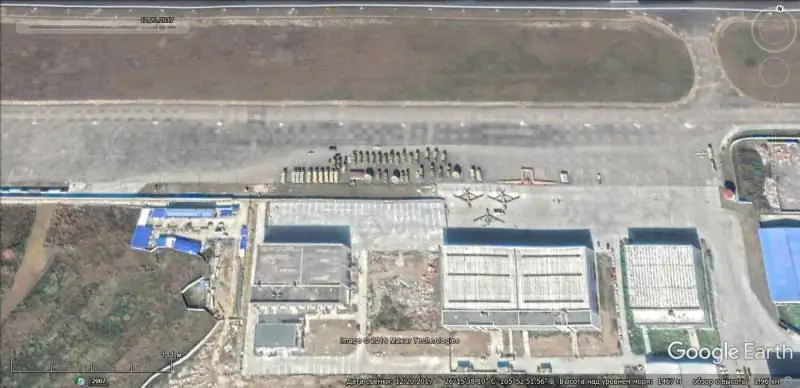
The area is home to the Chinese control center for unmanned aerial vehicles using satellite information channels. To do this, by 2015, all the necessary infrastructure was built at the Anshun airbase, stationary parabolic antennas were installed and there are several mobile drone control kits. In the immediate vicinity of the airbase, there is an enterprise of the Guizhou Aircraft Industry Corporation (GAIC), where heavy Chinese UAVs are being assembled.
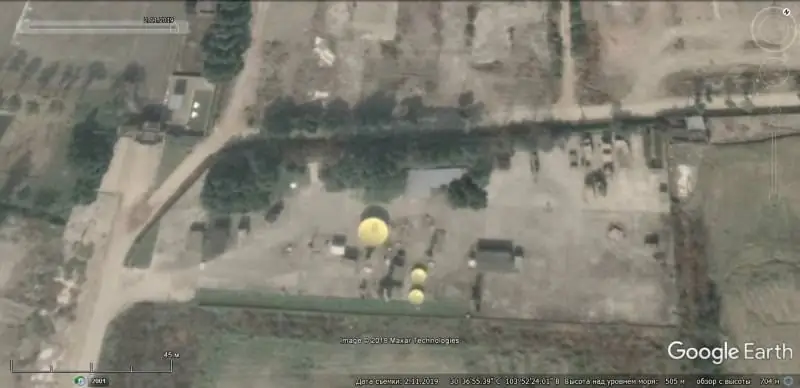
In 2018, the deployment of mobile space communication systems was observed in the southern and southwestern regions of the PRC. According to foreign observers, this is due to the massive supply of heavy drones with a long flight range to the troops.
Apparently, the PLA Air Force and Navy are developing their unmanned programs independently of each other. On the Daishan Island in the East China Sea, located 600 km north of Taiwan, an advanced air base was reconstructed in 2018, where the long-range missile-carrying bombers N-6 (a copy of the Tu-16) were previously located.

Based on the freely available satellite images, it can be assumed that drones are now based here, designed to monitor coastal waters.
Stealth UAV Sharp Sword
In July of this year, information appeared in the Chinese media that in 2020 the PLA Navy will adopt an inconspicuous heavy drone Sharp Sword ("Sharp sword"). This unit was jointly developed by AVIC, SYAC and HAIG. When designing the Sharp Sword UAV, the technology of low radar signature was used. Experts note that the Chinese unmanned "stealth", which is a further development of the "flying wing" type devices, designed by specialists from the 601st Institute of AVIC Corporation, in many ways resembles the American UAVs X-47B and RQ-170 Sentinel. It is possible that the technical solutions of the American RQ-170 Sentinel, which made an emergency landing in Iran in December 2011, were used to create the Sharp Sword drone. Also, the Chinese unobtrusive drone is outwardly similar to the Russian Skat UAV, the layout of which was presented at the MAKS-2007 air show.
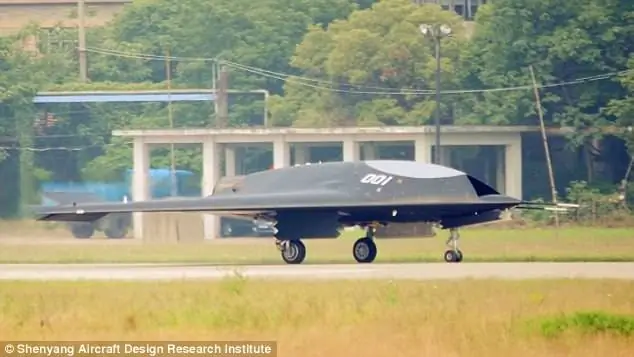
UAV Sharp Sword Liyan made its first 20-minute flight on November 21, 2013 from HAIG's Hundu airfield. The exact characteristics of the drone are not known. According to experts, the wingspan is about 14 m, the length is about 8 m. According to Chinese data, a non-afterburning version of the Russian-made R-93 turbojet engine is used as the power plant. The avionics include the equipment of the Beidou satellite navigation system.

At a military parade held in Beijing on October 1, 2019 in honor of the 70th anniversary of the founding of the PRC, an improved model was shown, bearing the designation GJ-11. This device differs from the previously tested prototype by a flat nozzle. According to the Chinese press, the GJ-11 is capable of carrying a combat load weighing up to 2000 kg on external and internal hardpoints. The maximum take-off weight is about 10 tons. The speed is about 900 km / h. Combat radius - 1200 km.
Supersonic UAV WZ-8
Of particular interest was the WZ-8 supersonic UAV shown at the parade along with other military equipment. A number of publications say that the device is designed to be launched from the H-6 long-range bomber. This conclusion is made on the basis of the fact that he has visible attachments from above. The WZ-8 drone is equipped with two engines, but does not have air intakes. It is believed that during its development, the technologies of the American high-altitude unmanned reconnaissance aircraft Lockheed D-21, which fell in 1972 on the territory of China, were used.
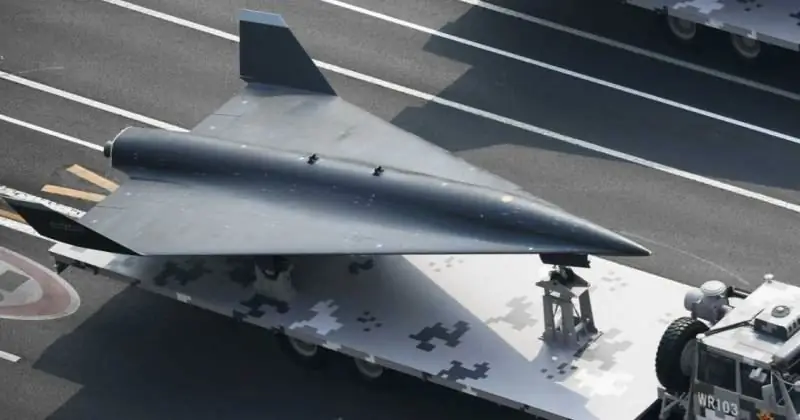
Apparently, the WZ-8 has relatively low-power liquid-propellant jet engines that run on liquid fuel and an oxidizer. Such engines, capable of operating independently of atmospheric oxygen, are used in launch vehicles and spacecraft. In the past, liquid-propellant rocket engines were used as a sustainer stage for anti-aircraft missiles of the Soviet S-75 and S-200 air defense systems. The two-component rocket engine is superior to other types of engines in terms of specific thrust impulse, and makes it possible to quickly accelerate the aircraft to a high supersonic speed. At the same time, its efficiency and duration of operation when flying in the atmosphere leave much to be desired.
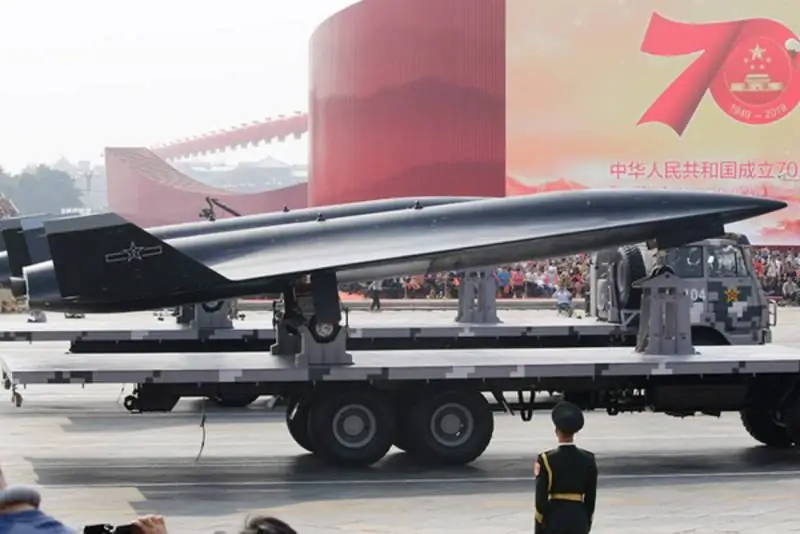
According to information published in the Chinese media, the WZ-8 high-speed reconnaissance aircraft is capable of maintaining a speed of 3M for 20 minutes, for a little over 2 minutes it can fly at a speed of over 5M. When flying in cruise mode, the flight range exceeds 1000 km. Judging by the size of the platforms on which the WZ-8 UAVs were shown, the length of the drone is approximately 10 meters, the wingspan is about 3 meters, the diameter of the fuselage is 0.65-0.7 m., which suggests that the return of a high-speed high-altitude reconnaissance drone to its airfield and its reuse is envisaged. At the same time, a number of domestic and foreign experts express doubts about the advisability of creating such an unmanned vehicle. There is a possibility that mock-ups or experimental aircraft could be demonstrated at the parade in order to mislead a potential enemy.






